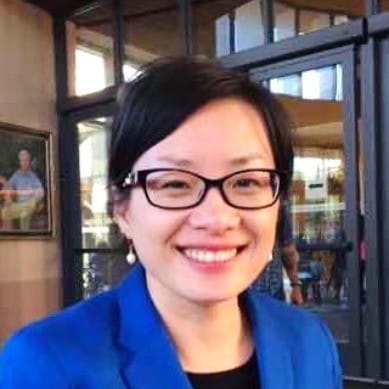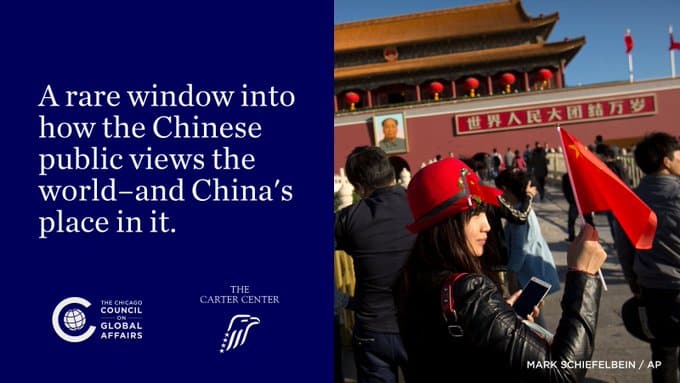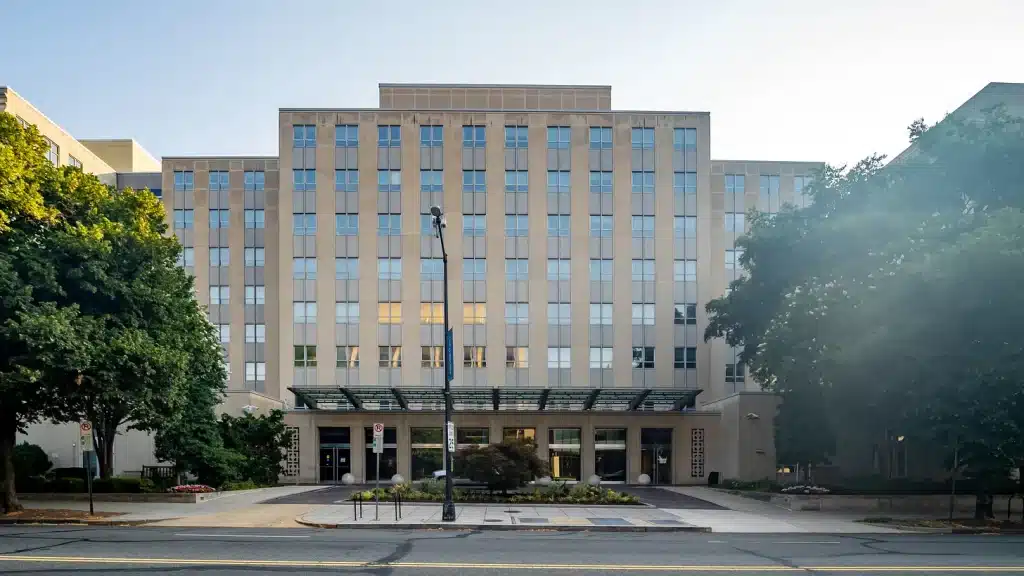An Interview with Michael Szonyi: Ming Dynasty, The Art of Being Governed, and U.S.-China Relations
- Interviews
 Juan Zhang
Juan Zhang- 06/17/2024
- 0
Editor’s Note: Michael A. Szonyi, Frank Wen-xiung Wu Professor of Chinese history in the Department of East Asian Languages and Civilizations at Harvard University, is a scholar of late imperial Chinese history. He specializes in using historical anthropology and fieldwork to study the social history of China’s southeastern coast. After researching the history of the military households of the Ming dynasty, he published The Art of Being Governed: Everyday Politics in Late Imperial China. Following the end of China’s “Zero-COVID” policy, Szonyi traveled to China for field research, where he has spent much of the past academic year. He explores contemporary realities through the lens of history and seeks historical insights into current events. Recently, the U.S.-China Perception Monitor conducted an exclusive interview with Szonyi on topics related to history and current U.S.-China relations.
You are an expert on the Ming Dynasty. What is the lasting legacy of the Ming Dynasty on modern Chinese society? In other words, what aspects continue to affect Chinese society today?
Szonyi: There are several different ways one can think about historical legacies. I’m going to focus on two legacies of the Ming, one international and one domestic, that are especially interesting because they have come to be completely unmoored from the Ming. In other words, these are things that have since come to be thought of as permanent features of the Chinese tradition. They aren’t. They are products of the Ming.
The first is the tribute system as a way of organizing international order, in which China dominates regional society largely through a pre-modern version of what Joseph Nye calls soft power, and in which diplomatic relations are conducted through a highly ritualized system of states recognizing Chinese pre-eminence in exchange for material and symbolic gifts. Though ostensibly designed on precedents from the Han to the Tang, for the most part what people are thinking of when they talk about the tribute system is basically a Ming invention. For better or worse, it continues to be the main operative historical analogy in analyzing China’s international relations. People who are critical of China’s rise claim that China under Xi is reviving the traditional tribute system; people who are more positive suggest that the tribute system actually represents a uniquely Chinese approach to maintaining international peace and stability, from which we in the present could learn.
The second is a rural order, especially in southern China, in which lineages are the dominant form of social organization. By lineages, I mean groups of families sharing a common surname, living together in a village, and in which all the men claim to be descended from a common ancestor. In many parts of South China, lineage organizations were largely responsible for the maintenance of order, for local public works, and for interactions between the community and the state. The material expression of this social order would be the grand ancestral halls found throughout villages in the south until the early twentieth century, which are now being widely rebuilt, as well as the printed genealogies that purport to show how all the male residents of the village share common ancestry (these, likewise, are being reconstituted today, but often online as well as in print). As my own work and that of other colleagues in the South China (Hua’nan) School of History has shown, this rural order first began to take shape as an intellectual movement in the Song and then spread through society only in the Ming. By the nineteenth century, it had already begun to come under broad attack by reformers and later revolutionaries who thought the old order had to go so a new China could be built. This means, as my teacher David Faure once put it, that the traditional rural order, far from being a timeless, eternal aspect of Chinese society, actually has a rather short history of no more than a few centuries. It is a legacy of the Ming.
More speculatively, and perhaps also more controversially, I wonder if the Ming might have been a significant turning point in the conceptualization of the Chinese polity as ethnically-based. The founding emperor of the Ming, Zhu Yuanzhang, repeatedly emphasized his goal of eradicating the influence of Mongol and other Inner Asian elements in his dynasty. But as scholars have come to realize, the Ming actually incorporated many such elements.
In an article I wrote more than a decade ago, entitled “Ming Fever”, I explored the possible reasons why Chinese people in the twenty-first century might be thinking about the Ming as showing parallels with their own time. In other words, I was suggesting that the interest in the Ming reflected in the popularity of books like the mega-bestseller Mingchao na’xie shi’er (Those Happenings of the Ming) might reflect a broad sense of a shared rhythm between the two eras: a founding emperor who was autocratic and all-powerful, imposing his own vision of a new social and political order, followed by the gradual transformation of that never-fully implemented order into a prosperous and lively society.
It’s extremely interesting that the “Ming Fever” has since completely cooled off. Of course, it is in the nature of social and cultural trends and crazes to flourish briefly and then die out, replaced by the latest “new” thing. But I also wonder if more than a decade of Xi Jinping’s leadership may have broken the sense of parallelism that I described above. However, succession crises were a common feature of imperial transition in the Ming, so maybe we will see a second wave of “Ming Fever”.
Your book The Art of Being Governed offered very interesting observations. It explains various unofficial flexible arrangements between communities and the state during the Ming Dynasty. The angle you focused on is quite narrow: regular people and their daily lives. What is your biggest takeaway from this research?
Szonyi:The Art of Being Governed tells the story of how a significant proportion of the Ming population, hereditary military households known as junhu, managed their obligations to the state. Junhu displayed tremendous creativity and strategic thinking in trying to figure out how to fulfill their obligations – to provide military labor to the Ming army – in ways that minimized the cost to them and maximized the potential benefits. The book is largely about these strategies and their broader consequences.
I’m afraid I’ll have to dispute your characterization of this approach as narrow. What topic could be more broad than rethinking the whole of Chinese history from the perspective of the everyday life of ordinary people? Mao Zedong himself wrote that, “The people, and the people alone, are the motive force in the making of world history.” That being said, I have no idea if he would have approved of the book.
Understanding how Chinese people, using their own distinctive cultural resources, through their own innovative strategies, interact with the Chinese state, optimizing their own interests and in the process reshaping the options open to the state, and thinking through these issues historically, may not tell you who will be in the next Politburo Standing Committee, but I think it can still tell you a lot about Chinese society past and present.
Historians don’t typically think in terms of “takeaways”, in the sense of broader theoretical implications or actionable policy recommendations. That’s more the domain of certain social sciences. Having said that, I think the book points to a basic continuity in Chinese governance in the long term, which is that, in order to govern effectively over a huge polity, successive Chinese states have delegated functions to individuals and groups within society (the Chinese terms I am thinking of here are chengbao and shouquan 承包/授权). This broad orientation invariably generates unanticipated consequences, as actors in society turn state policies to their own advantage. Often this development is seen as reflecting the failure or decay of state institutions. This is a misrecognition of the real interaction of specific policies with broad approaches to governance.
These same themes drive the narrative of my current project, a study of modern Chinese history from the perspective of rural society. I hope to finish this book, which I think will be called Village China, in the next year or so.
In the current discourse in the U.S., China is often described as aggressive. Do you think this characterization of China, and Chinese civilization, is accurate?
Szonyi: As a historian, I’m strongly disinclined to describe any society or culture – whether that be China or some other society – as inherently aggressive or unaggressive. As a historian, I am more inclined to ask why a particular rhetoric about peacefulness or aggression comes to be widespread, and I think this is certainly the better question to ask about China.
Let’s start with the first statement I made just now. Your question presumably, and rightly, rejects the long-standing tradition in Chinese thought of imagining the state and the family as both analogies and models for one another. You are not asking about whether aggression or aggressive behavior is a characteristic of Chinese individuals or families. You are asking whether aggression or aggressive behavior is a characteristic of the Chinese state. If we think of aggression in international relations as a favoring of policies or acts of expansion through unprovoked military attacks, then it becomes clear that aggression is much in the eye of the beholder.
At a certain basic conceptual level, the statement that successive Chinese states have been non-aggressive simply cannot be true, because the size of successive Chinese states has broadly been one of continuous expansion (the Song-Yuan period represents the main discontinuity). My colleague Iain Johnston has written a very important book showing that the use of war has long been an important element of Chinese strategic culture.
Some Chinese friends insist that China’s expansion does not reflect aggression because it occurred mostly under periods of non-Han rule, especially the Manchu Qing (1644-1911), and that Han Chinese rulers have never engaged in acts of aggression. This is empirically untrue, as Vietnam has learned twice. For a historian, such arguments are also unconvincing, because they reflect a pick-and-choose approach to history: let’s label the things I like about the past Chinese, and anything I don’t like about the past as the product of foreign influences. But more importantly, if that is the case, then that should be an argument for the Chinese state to return those territories that were annexed under the Qing to self-rule, which no Chinese ruler of the modern era has seriously proposed.
That being said, there is certainly a powerful rhetoric in Chinese tradition up to the present that says that China’s foreign policy preferences have always been Confucian, peaceable, and non-expansionist, and China has grown over time as peoples and states on its periphery have been drawn in by attractive Chinese civilization (soft power, again!). We should not confuse rhetoric for reality, and we especially should not assume that this rhetoric provides helpful ways of predicting Chinese foreign policy behavior in the future.
Are the U.S. and China locked in a “New Cold War”? If not, can you explain the current state of U.S.-China relations?
Szonyi: When we use historical analogies like “New Cold War” we should always be mindful of two distinct questions. Is the analogy accurate? Is the analogy helpful? I think the answer to both these questions is no.
First, is the analogy accurate? Is the U.S.-China situation today broadly similar to the U.S.-USSR rivalry of the mid-twentieth century? Here are just a few ways in which it is not. The economies of the two countries today are profoundly intertwined. Decoupling is one thing, but disentangling the two is quite another. The two countries face shared global challenges (in particular, climate change), but there are many others, that they simply must – for the sake of the future of the planet – work together to address. One dissimilarity about which I feel especially strongly is the role of the millions of Chinese-Americans and Chinese visitors currently in the United States. Not only was there nothing comparable in the Cold War, but even thinking in such terms puts these people in a very difficult, awkward, and even dangerous position, as the rise in anti-Chinese (and more broadly anti-AAPI) violence in the U.S. demonstrates.
Second, is the analogy helpful? Does thinking in terms of the U.S.-USSR rivalry provide us helpful tools to drive policy today? Here too, I think the answer is no, with one exception. The exception is that the strain of thought that says that America can prevail in the rivalry by remaining true to, and celebrating, its own values remains the right approach, in my mind (soft power, for a third time!).
There are some doubts about using strategic ambiguity in the Taiwan Strait. With the changing dynamics of U.S.-China relations, do you think this is still an effective policy to maintain peace across the border?
Szonyi: A senior member of a former U.S. administration once told me that, from the perspective of the United States, any day when Xi Jinping wakes up and says, “Let’s not invade Taiwan today,” is a good day. I concur with this evaluation. In my opinion, strategic ambiguity remains the best approach to maintaining peace across the Taiwan Strait.
First, though, I should say that one of the chief arguments in favor of strategic ambiguity, that it deters Taiwanese adventurism, is spurious. The argument itself dates from a previous era, but today it reflects a profound misunderstanding of domestic politics in Taiwan. That Taiwan cannot cross the PRC’s red line of taking steps towards de jure independence is something that is well understood by the political elites on all sides of the blue-green spectrum, and by the Taiwanese electorate. To put this another way, in my opinion, Chen Shuibian would be totally un-electable in Taiwan today. Taiwan continues its longstanding policy of seeking to expand its space in the international arena, and it does so soberly and cautiously. That’s a very different thing than carelessly moving towards independence. There’s simply no need to deter a behavior that has zero chance of ever actually happening.
That leaves the deterrence effect on China. Strategic ambiguity both deters PRC aggression towards Taiwan, and casts uncertainty on PRC efforts to enhance its own capabilities, so it remains a good policy. It provides a context in which Taiwan can bolster its own defense capacities, and the U.S. can strengthen the abilities of its allies to work together more closely to deter PRC aggression in the future.
I’m actually not terribly worried about the possibility of a PRC invasion of Taiwan, for the simple reason that no matter how much PLA capabilities grow, a successful invasion of Taiwan remains a highly challenging military objective. In the current climate, a failed invasion would be potentially a regime-changing event in China, and therefore, I cannot see Xi Jinping risking it, especially given that even a successful invasion would come at the cost of a significant threat to China’s continued economic growth. I often hear from Chinese friends that policy flexibility on Taiwan is constrained by domestic popular opinion. That may well be so, but if it is true, then a responsible response might be to tamp down popular passions rather than enflame them.
Let me close with two final observations on cross-Strait relations and peace. As a growing number of analysts seem to be coming to recognize, the PRC threat to Taiwan extends far beyond military invasion. A comprehensive U.S. policy ought to also consider how best to deter other forms of Chinese aggression, including blockades and information warfare. Second, I think some American politicians need to be mindful that the future of Taiwan is a matter for the people of Taiwan to decide. It is unhelpful for Americans to treat Taiwan as a tool that the U.S. can use to undermine China, or even worse, as a tool for their own domestic political ambitions.
China abruptly dropped its traumatic Zero-COVID policy in late 2022. You are one of the few academics who spent almost the full academic year in China right after reopening. Where did you travel in China? What prompted you to visit China, at a time full of such uncertainties? Were there any scars left on society after such a strict policy? Overall, what were your observations in post-pandemic China?
Szonyi: I went to China in August 2023 for a couple of reasons: to continue research on two book projects, to meet in person with colleagues and friends I have known for decades, and also because I wanted to send a message to the Chinese academic community that U.S.-based scholars were keen to resume engagement. I initially had many questions. Would I be granted a visa? Would I be welcomed? Would I be able to access the materials I needed? Would I put my Chinese friends and colleagues in an awkward position? The short answer is that my time in China far exceeded my expectations. I made huge progress on my research projects, subject to some limitations that I’ll discuss in a moment. I gave more than twenty talks in a dozen cities, leading to some very productive conversations that have helped me refine my work, and some new collaborations. I spent a lot of time in the countryside, especially in my main field site of Yongtai, near Fuzhou. This was an enormously invigorating intellectual year for me (you can read some more about what I’ve been up to here and here, in Chinese).
Not everything was smooth sailing. One lecture was at risk of censorship; I was able to resolve the issue by making clear that I would simply cancel without assurances that I could say what I wanted (I acknowledge that not everyone enjoys this privilege). Archival access remains difficult, and difficult to predict. Some people chose not to engage with me, or to be so cautious as to make engagement awkward. But the command from the top is that China should open to the world, and while everyone is interpreting this in their own way, university administrations are keen to support exchanges of all sorts.
China is a far more highly surveilled society than before the pandemic, and this can be discomforting. But there is still plenty of space for frank conversation, and as always it is people in China who know best what the boundaries are. At the very least I can confirm that the dark sense of humor of many ordinary Chinese people does not appear to have suffered from the pandemic. There is plenty of concern about the state of the economy and about the state of the party. But the malaise that characterizes much of the Western media reporting on China post-COVID is, I think, not the whole story.
You are right that few U.S.-based academics are currently in China; I believe the total number of students as of May 2024 was still well under one thousand. I think that the value proposition for young Americans to study in China has changed dramatically post-COVID, and we educators will have to think hard about how to motivate our students, especially undergraduates, to study in China. As for scholars, travel to China for academic research today requires grappling with a whole range of considerations – practical, security-related, and ethical. There are limitations on what is possible, and these affect different scholars differently (I discuss these questions in much more detail on a webinar with Joe Esherick, organized by Emily Baum and Denise Ho, that you can find here. I also strongly recommend the other two sessions in the series.). Every scholar needs to make their own decisions, based on their own calculus. But I would strongly encourage colleagues to at least consider resuming their travel. Regardless of whether the bilateral relationship improves or continues to deteriorate, more mutual understanding and more person-to-person connection is good for both countries.
Author
-

Juan Zhang is a senior writer for the U.S.-China Perception Monitor and managing editor for 中美印象 (The Monitor’s Chinese language publication).







